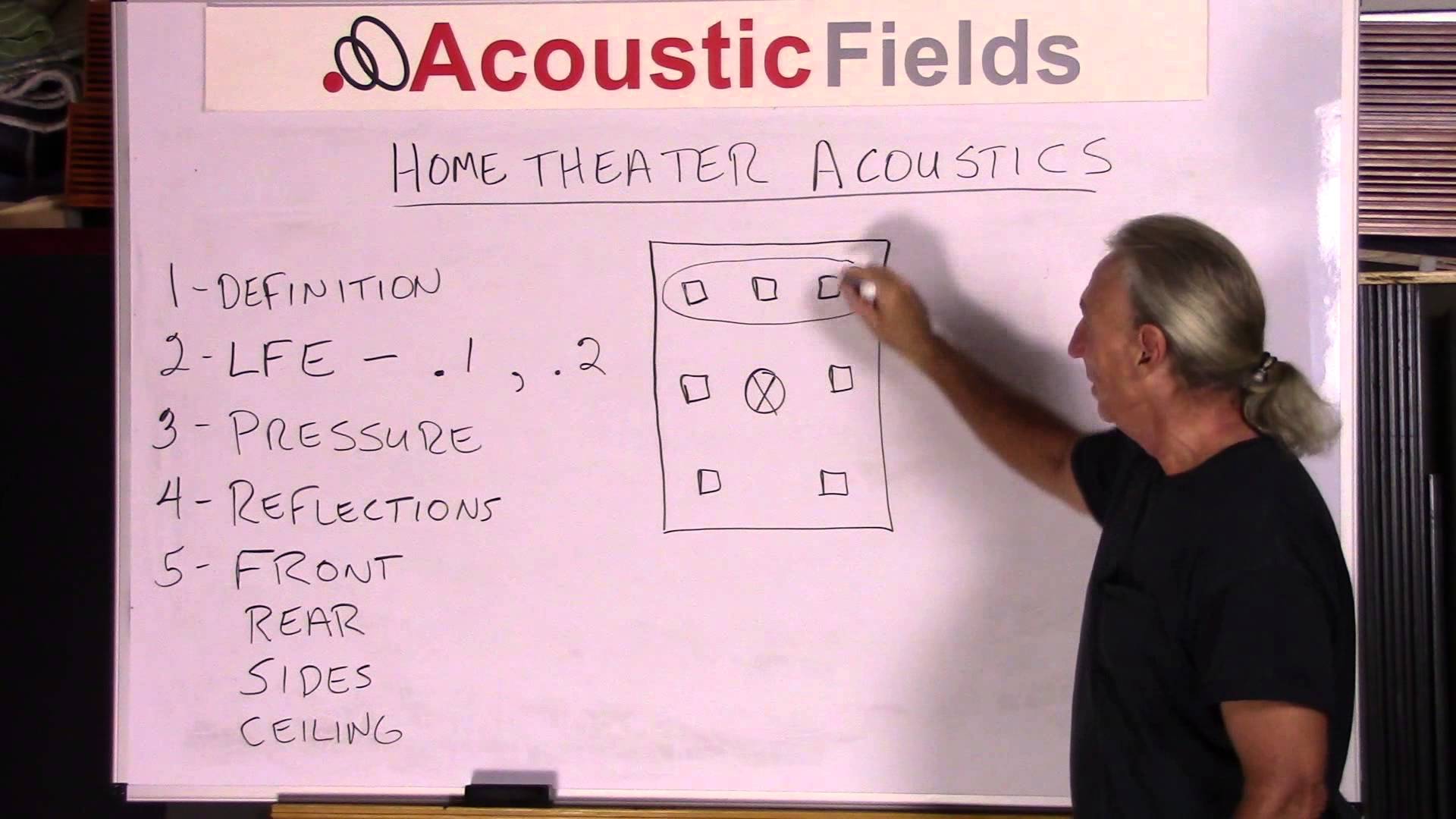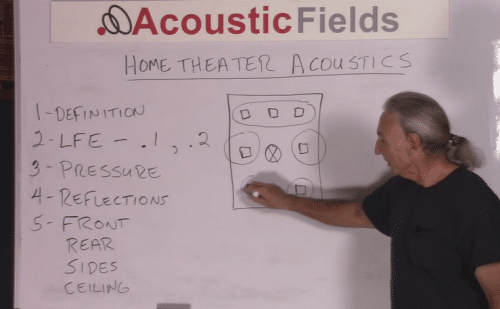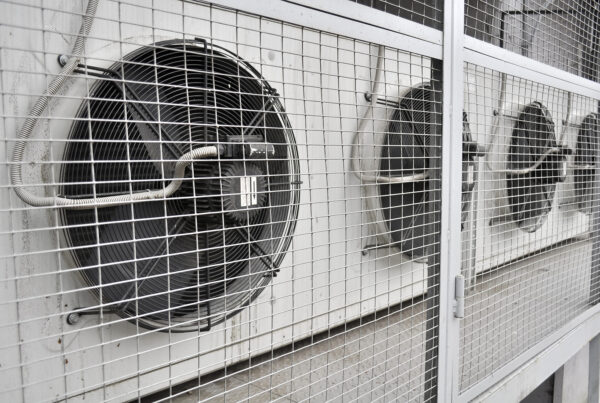Today we’re going to talk about home theater acoustic design. Those of you that follow me know that I’m always talking about usage. What is the usage of the room? Is it home theater? Is that a personal listening room? Is it a control room?
All usages have different acoustical requirements, they have different acoustical treatments, there is some commonality, there is some overlap, especially in the low frequencies as we want those managed absolutely regardless of usage. However home theater acoustics has its own set of requirement, so let’s take a look at why that’s so.
Home Theater Acoustic Design Faces Unique Challenges
In a home theater, what do we have? We have multiple sources within the room interjecting energy. They’re all in different positions in the room. Of course this is because the goal of home theater acoustic design is to envelope the listener in this surround type of experience.
Our goal from a manufacturing, speaker manufacturing standpoint, we’ll take a little poke at the speaker manufacturers here, is obviously to sell more speakers because that helps them but as engineers and acousticians it makes our job really difficult because we have all these sources. Two sources for a two channel setup is a challenge, when you have all of these sources in a home theater you have to be extra careful in how you treat the room.
So we have all these multiple modal sources, plus we have the low-frequency effect channel. This is the sub-woofer channel. We can have one sub-woofer, we can have two, I’ve seen four, I’ve seen six. So we have extra channels devoted to producing low frequency energy and obviously this is for the explosions, crashes and things like that, that are so prevalent in home theater acoustics.
So the bottom line here is we have all these sources, we have all of these low frequency generating sources, we have lots low frequency pressure in the room. It’s just common sense with all the sources with additional low-frequency effect channels that we’re going to have more sound pressure to deal with and obviously reflections are critical.
Reflection Management Is Critical
The reflections in front part of the room (as shown in the below picture) with the left, right and center channel, creates a sound field that is completely different from the sound field that’s created by the side channels. Each acoustical objective is different with the sound field that the front channels create.
It’s also different from the rears. The rears and the front are drastically different. They’re just not equal at all. The sides are different again than the front and rear. So we have to take all of these sound fields created by all of the sources and manage them correctly if the listening position is going to reap the benefits of a properly designed home theater acoustical situation.
So we have front, we have center, which we all know is our vocals, so we have a strong desire to have a high speech intelligibility with our center channel, and then we have to control the reflections off the side walls which is critical at the listening position so that when that airplane flies left screen to right screen the sound follows.
If the time signature of the reflections in your home theater are not set up correctly, the sound won’t follow the image and therefore you won’t have done a good job in your home theater acoustics. So reflections from the side walls, all of this direct energy from the front very is critical at the listening position.
What’s our goal with the side walls?
Well it’s not localization of sound but an ambient sound field well distributed. So we don’t want to hear and be able to locate where the side channel speakers are. Instead we want to hear the energy and the ambient levels that they produce. Same with the rears.
So we have a completely different sound field generated from all of these positions. So we have to take that into account in our home theater acoustic design and obviously the management of low frequency energy is critical. If you want verification of that statement just ask the other members that live in your house or the adjacent rooms and you’ll quickly get an answer there.
So three distinct sound fields, three distinct areas of treatment.
Let’s not forget about ceiling treatment in home theaters
The ceiling is also another critical area. The ceiling can be all absorptive, it can be diffusive. It depends on what you’ve done with the three sound fields discussed above. So in future videos we’ll actually get into the treatment applications for each of these areas but for now you have to realize that there are three real genuine sound fields created in a home theater environment with front, sides and rear channels, so we need to make sure those are properly addressed.
In Summary
I hope this explanation helped. If you would like to learn more about this subject please sign up for our free room acoustic treatment videos and ebook which provide step by step instructions on all major room acoustic issues. Get instant access by signing up now. Alternatively if you would like an initial free consultation about your home theater acoustic design, feel free to contact me directly at: 520 – 392 – 9486 MST or info@acousticfields.com.
Thanks
Dennis










Verry good and informative clips. You explain this far better than anyone else I have read or seen. So I had to buy the big book pakage.Thanks
Best regards
Lasse
L, Thank you for your support and following.